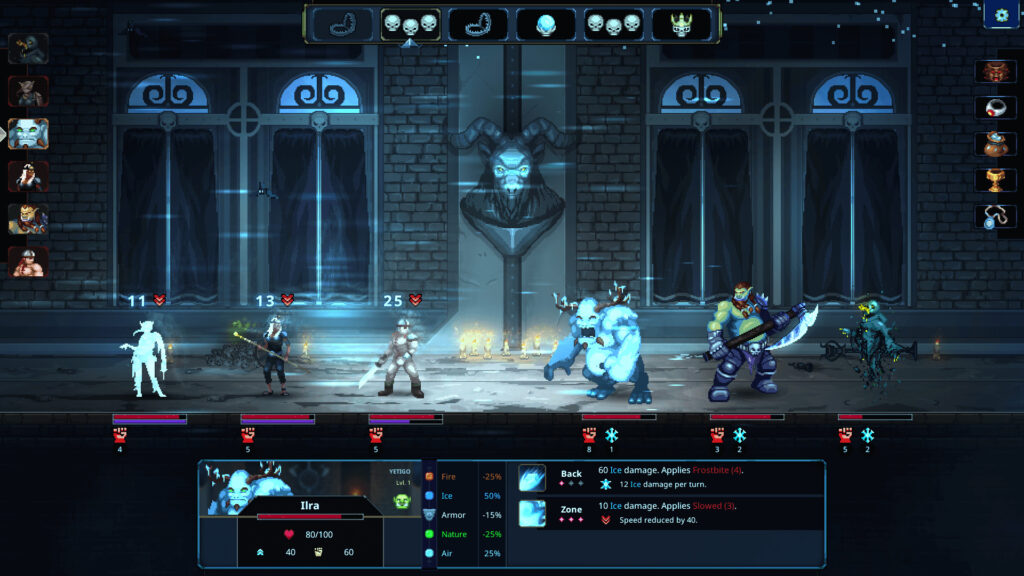
Legend of Keepers is a roguelike dungeon defense game that just entered Steam Early Access. This tongue-in-cheek dungeon crawling roguelite has bite-sized missions, but from the monsters’ perspective.
You play as a dungeon master working for the Dungeons Company, and are tasked with fending off raids from pesky adventurers hoping to smite evil for fame and profit.
You start each run by picking your dungeon master. Each of them have their own set of starting resources, traits, and abilities, and act as the boss of your dungeon. Once you’ve made your choice, its time to start your career as a maniacal overlord defending their stronghold and treasure.
The game is divided into weeks, with each week giving you a chance to improve your dungeon and its defenders in some way. These are randomly generated, and typically you’ll have two or three choices.
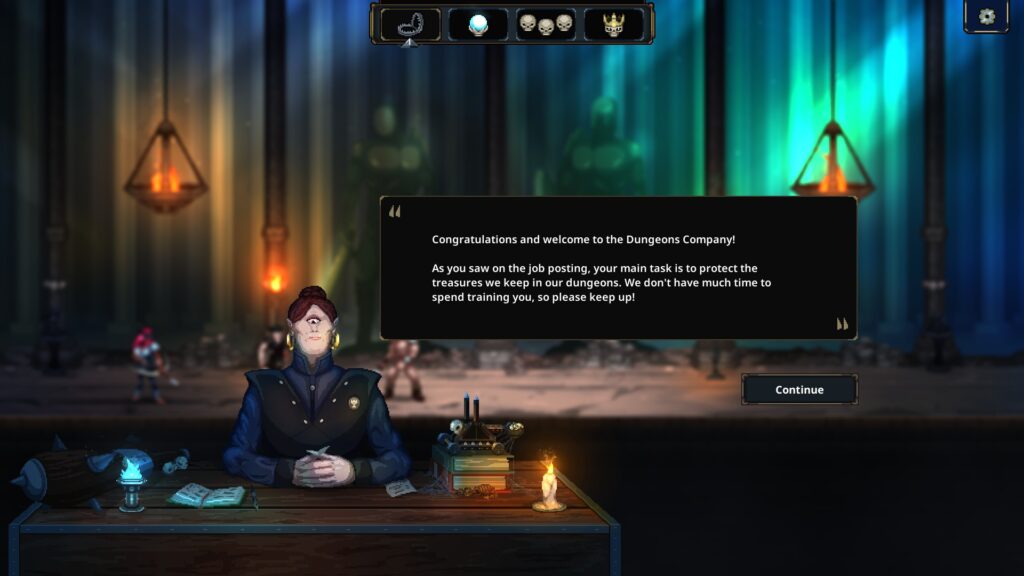
The most common of these are merchants, which will give you a chance to recruit new monsters or buy new traps. The merchant usually has three items on offer at any given time, and you can “refresh” their stock by paying a small fee.
Other common weekly choices include trainers that can increase the level of your monsters, workshops that can upgrade your traps, and an alchemist that can transmute the game’s three resources, gold, blood, and tears.
There are also random events you can choose to partake in, but these can be risky. Sometimes you’ll get a nice result, but you could just as easily get screwed over by bad RNG. In my experience, you typically only pick these when you don’t have the resources to do one of the other choices.
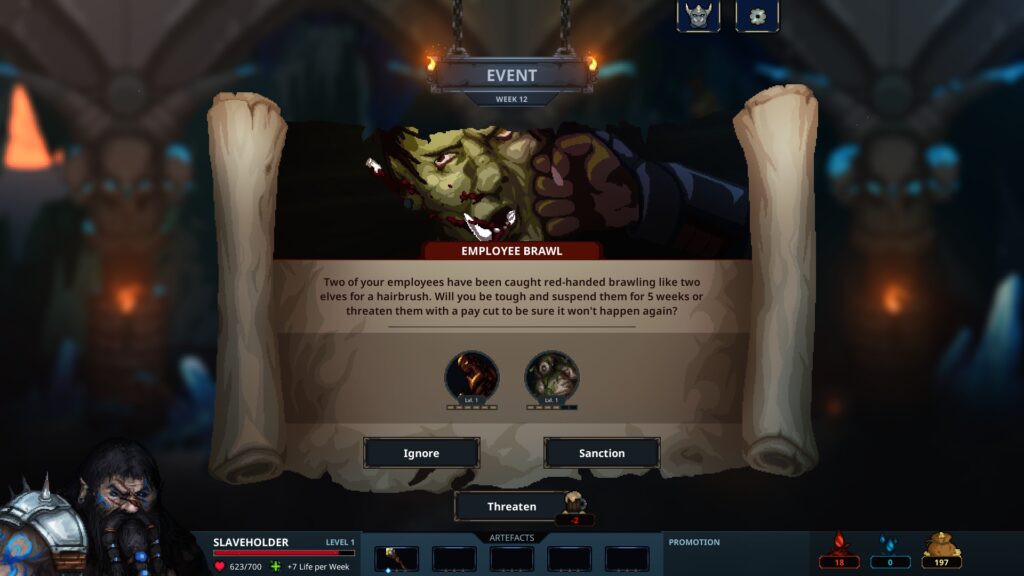
About once a month or so, your dungeon will be visited by adventurers. Defending your dungeon is the real meat of the game, and it’s here that all your preparation between raids is put to the test. When raid day comes you’ll usually get to choose between two or three parties to fight against, with Veteran and Champion parties being tougher, but offering greater rewards if you can defeat them.
You don’t get to see the actual composition of a party before you choose, which adds an element of RNG that can potentially screw you over. After playing for a while though, you gradually do learn when to play it safe, and when to pick the harder and potentially more risky raids.
Once you’ve decided which party to defend against, the game enters a planning phase. At the start of the game, each dungeon always consists of two monster rooms, two trap rooms, a spell room, and your boss room. Later on, the game begins to add more special types of rooms, such as disaster rooms.
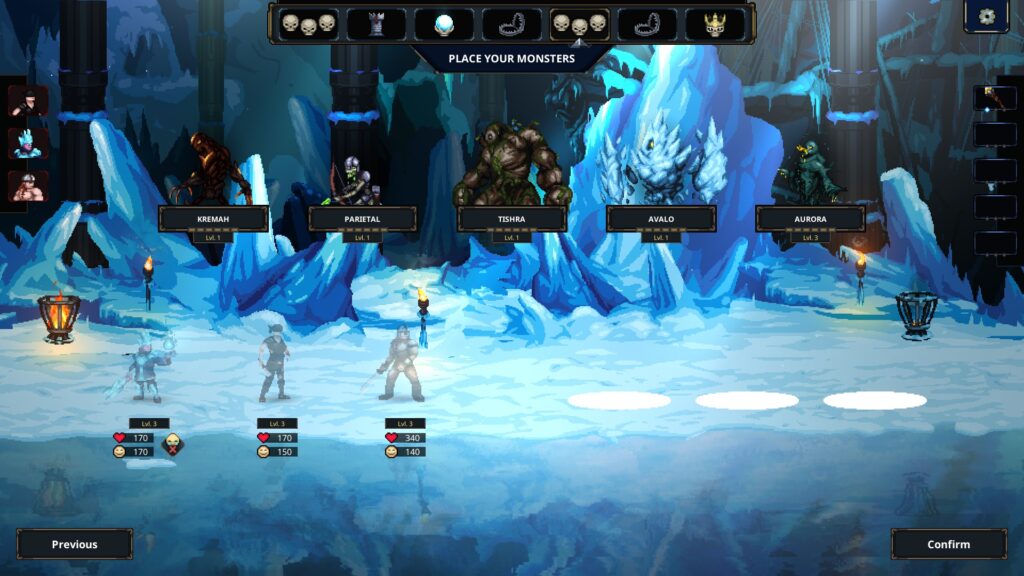
During the planning phase, you’ll get a chance to see what adventurers are in the enemy party, and can then build your defenses to counteract their party composition. You can put one trap in each trap room, and the monster rooms can have a party of three monsters. The spell room’s abilities will be based on the dungeon master you are playing as.
Once you’ve planned everything out, the adventurers will make their way through the dungeon, encountering all the traps and monsters you’ve placed to stop them. There are two ways to dispose of adventurers.
You can just kill them outright, or you can attack their morale until they flee. Killing them gives you blood, while making them run away gives you tears. These two resources can be spent during different events to upgrade your dungeon and its defenders.
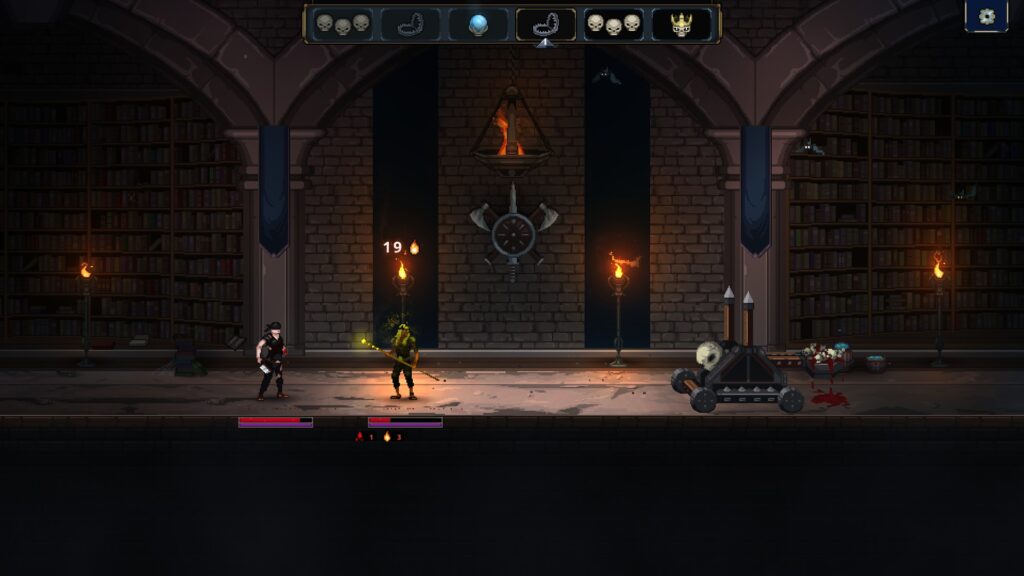
The party-based battles are the most meaningful part of the dungeon defense stages. Each type of adventurer and monster will have different stats, passive and active skills, weaknesses, and so on. A lot of the strategy in the battles revolves around not just picking monsters that counteract the party composition of the adventurers, but also the position of your monsters in the party.
All skills in the game will target a specific position in the opposing party. Because of this, you’ll need to consider the strengths and weaknesses of your monsters and what sort of skills will usually be targeting them.
Many ranged classes have skills that target the back position, so if the enemy’s ranged support deals a lot of Nature damage, for example, then you’ll want a monster that is resistant to Nature to be in your back row.
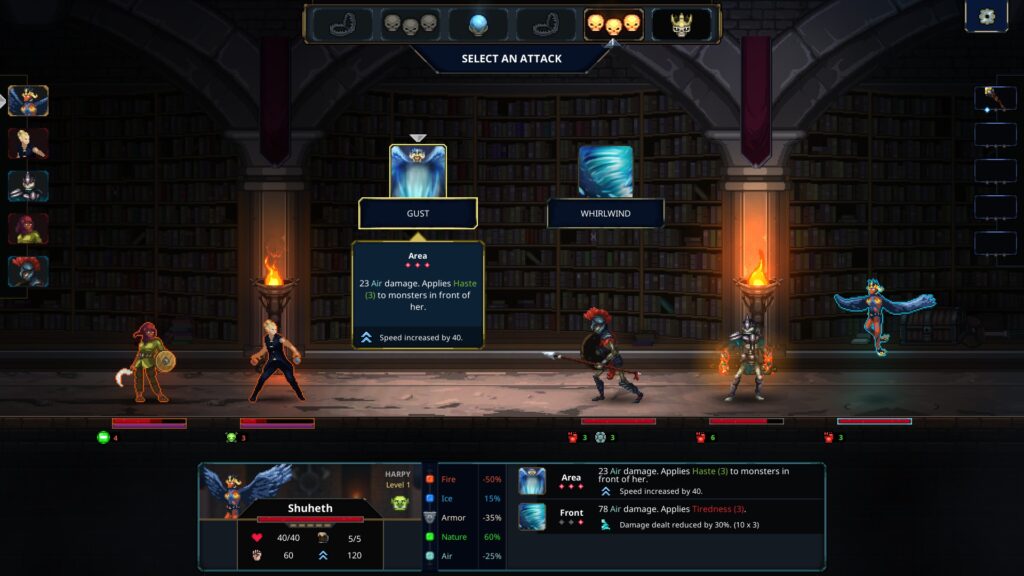
Should your monsters die in battle (and they will, trust me), then they will be automatically resurrected after the raid. While Legend of Keepers might not have permadeath for your monsters, that doesn’t mean they are totally expendable.
Dying damages their morale, and if they get too demoralized then they will suffer burnout, resulting in poor performance. Because of this you’ll need to bench your monsters in the garrison from time to time so they can take a break.
If the enemy party manages to breach your defenses then you’ll get one last chance to defend the treasure with your dungeon master. This is effectively a boss battle where you control the boss, and you’ll have access to some really powerful attacks and abilities.
That said, your dungeon master is hardly invincible, and can easily be killed if you underestimate your enemy, and don’t weaken them enough before getting there.

My initial impressions of Legend of Keepers are fairly positive so far. Although I’ve only played the prologue for a few hours, I can see that the game has a lot of promise. The mechanics are fairly straightforward, but its pretty rewarding to defeat a tough party and reap the rewards.
The Early Access phase is expected to last for between six months to a year, but the game already has a decent amount of content. There are two dungeon masters with a third coming soon, and dozens of traps, heroes, and monsters.
Check out the free prologue if you want to play the game for yourself aside from Early Access. It does a good job of giving you a taste of what to expect from the full game.
If the idea of a roguelite dungeon defender with some interesting management mechanics and tactical combat interests you, then keep an eye on Legend of Keepers as it makes its way through Early Access.